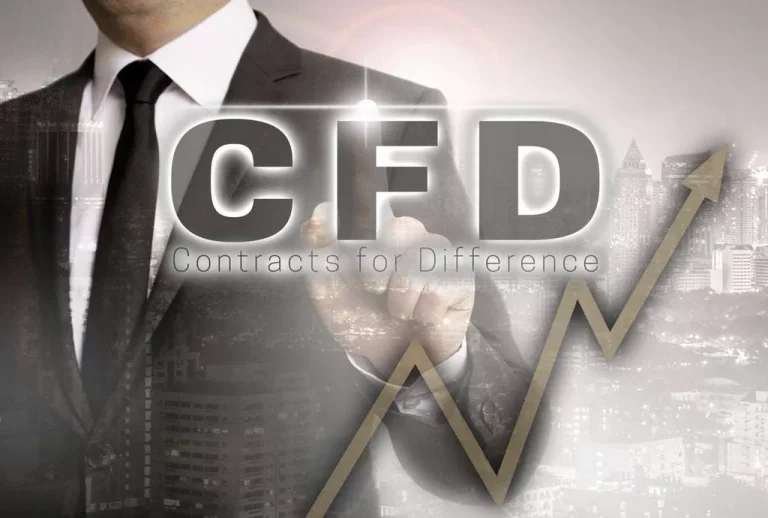There are no banks or institutions to manage your money because there are no intermediaries to authorize transactions for DeFi applications. Furthermore, the code is open to anyone’s scrutiny, so there’s a sense of transparency in DeFi protocols. There are numerous applications available for users, most of which are built on the Ethereum blockchain. Such results are not bound by geographic borders and do not require identifying documentation for participation. Third, if you’ve bought into the crypto/web3 vision of a decentralized economy, DeFi is the financial architecture that makes all of the things you’re excited about possible.
Any estimates based on past performance do not a guarantee future performance, and prior to making any investment you should discuss your specific investment needs or seek advice from a qualified professional. There’s an open, permissionless, trustless world of financial products out there. You can look at its website to see if the company has taken reasonable steps to reduce its risks. You can also look for news items about the protocol being hacked on the internet and their precautions to prevent it from happening again. Given its youth and innovation, the legal details around DeFi have likely not yet fully materialized. Governments across the globe may aim to fit DeFi into their current regulatory guidelines, or they may construct new laws pertaining to the sector.
DeFi eliminates the fees that banks and other financial companies charge for using their services and promotes the use of peer-to-peer, or P2P, transactions. Decentralized finance uses the blockchain technology that cryptocurrencies use. Applications called dApps are used to handle transactions and run the blockchain. Users tend to engage with DeFi on cryptocurrency networks like Ethereum on decentralized applications—aka dApps. Essentially, dApps are similar to the normal apps we use every day, but they’re powered behind the scenes by smart contracts—digital agreements that execute automatically when the contract terms are met. The Ethereum platform lets you send digital assets around the world seamlessly.
That secures the system by providing users with anonymity, plus verification of payments and a record of asset ownership that’s (nearly) impossible to alter by fraudulent activity. With cryptocurrency-related financial services, there are two prevailing models in use today with CeFi and DeFi. When comparing CeFi vs. DeFi, it’s important to note that there are similarities and differences https://www.xcritical.in/ between the two approaches. The blocks are “chained” together through the information in each proceeding block, giving it the name blockchain. Information in previous blocks cannot be changed without affecting the following blocks, so there is no way to alter a blockchain. This concept, along with other security protocols, provides the secure nature of a blockchain.
What Is Decentralized Finance (DeFi) and How Does It Work?
In 2015, the Ethereum network launched and famously debuted “smart contracts,” which are like specialized programs that live on a blockchain. With this innovation, Ethereum became the first “programmable” blockchain, capable of doing much more than just peer-to-peer transactions. By layering and combining smart contracts (sort of like stacking Lego blocks), developers could build entire decentralized apps (“DApps”) that live on a blockchain rather than on a company-owned server. The framework for this financial system functions according to programmed rules. Your collateral assets would then sit locked up until you send back the loan amount.
As my colleague, Jeanna Smialek, explained in an article on stablecoins last year, the worry stems from the fact that stablecoin issuers aren’t legally required to back their coins one-to-one with safe, cash-like assets. Stablecoins are cryptocurrencies whose value is pegged to the value of a government-backed currency, like the U.S. dollar. DeFi’s total value locked or T.V.L. — a standard way of measuring the value of crypto held in DeFi projects — is currently about $77 billion, according to DeFi Pulse. That would make DeFi something like the 38th largest bank in the United States by deposits, if it were a bank. Kevin Roose, a Times technology columnist, is answering some of the most frequently asked questions he gets about NFTs, DAOs, web3 and other crypto concepts.
- A more advanced version of this type of investing is called yield farming, which involves lending cryptocurrency to a DeFi platform or operation in exchange for interest or additional cryptocurrency.
- The aim of decentralized finance is to do away with the intermediary powers who typically control and direct financial institutions.
- In this context, understanding the architecture and working mechanisms of different DeFi protocols becomes crucial in creating new and innovative products.
- There’s no way, in the traditional financial system, for a DAO to create a membership token out of thin air and use it to raise millions of dollars.
- You can’t call up JPMorgan Chase or Goldman Sachs and ask them to give you a quote for Smooth Love Potion, priced in Dogecoin.
A P2P DeFi transaction is where two parties agree to exchange cryptocurrency for goods or services without a third party involved. In centralized finance, money is held by banks and third parties who facilitate money movement between parties, with each charging fees for using their services. A credit card charge starts from the merchant and moves to an acquiring bank, which forwards the card details to the credit card network.
Fidelity Crypto®
Two of DeFi’s goals include reducing transaction times and increasing access to financial services. That costs time and money – it can take up to four days to settle many cross-border trades. Learn how to choose and set up your first crypto wallet with this beginner’s guide.

Think of savings accounts that reward higher account balances with better interest rates, charge fees for dropping below a minimum bank balance, or require minimum transaction amounts. Many regions are plagued by predatory lending models that exploit people looking to borrow money. Even sending money from one bank account to another can incur service charges. Try sending remittances abroad, and you’ll find even more restrictions—and fees—set in place by intermediaries. On the other hand, such establishments hold and control your assets to a degree. You are limited by banking hours for particular actions, and transactions can be cumbersome, requiring settlement times on the back end.
Any entirely decentralized solutions, however, may continue to operate outside of mainstream finance. Second, many DeFi fans argue that blockchains are technologically superior to the existing banking system, much of which runs on ancient databases and outdated code. You could also look at trading activity on decentralized exchanges, which has grown by triple-digit percentages in the past year. The biggest risk in the DeFi space, again, is the absence of regulations to protect your money. Because DeFi is an emerging industry, you run the risk of investing in a project that could fail. Plus, the cryptocurrency markets are highly volatile and complex, making it difficult to gauge both the market and industry.
Cryptocurrency is an exciting, dynamic area of finance but learning the basics is an important first step before you venture into this world. Continue your crypto journey with N26 and discover more about the opportunities and potential this field holds for you. In this world, cryptocurrency becomes the de facto currency for transactions and records. Our goal is to give you the best advice to help you make smart personal finance decisions. We follow strict guidelines to ensure that our editorial content is not influenced by advertisers. Our editorial team receives no direct compensation from advertisers, and our content is thoroughly fact-checked to ensure accuracy.
The Future of DeFi
Additionally, commercial banks require specific customer details and identifying documents for participation. To an extent, banks and other financial institutions have power over your funds. These entities can freeze your assets, and you are at the mercy of their hours of operation and cash reserves.

These solutions will inevitably interact with one another as the DeFi space matures. Aggregators are the interfaces by which users interact with the DeFi market. In the most basic sense, they are decentralized asset management platforms that automatically move users’ crypto assets between various yield-farming platforms to generate the highest returns. DEXs allow users to trade digital assets in a noncustodial way without the need for an intermediary or third-party service provider. Although they comprise only one element of the DeFi sector, DEXs have been a part of the overall crypto industry for years.
When it comes to emerging industries, early investment can often bring outsize returns. But it’s important to understand the risks, which can equal or outweigh the potential returns. But if and until it does, the DeFi space will be rife with uncertainty and speculation. You might think, “Hey, I already do this when I send my friends money with PayPal, Venmo or CashApp.” But you don’t. You still have to have a debit card or bank account linked to those apps to send funds, so these peer-to-peer payments are still reliant on centralized financial middlemen to work. With an Ethereum-based blockchain, smart contracts help the DeFi model work.

You can use them to do things like send funds to a particular account on a specific day. To provide their services, many dApps need liquid cryptocurrency available on the app. So they offer to pay income, a yield, in exchange for investors putting up their coins for some period.
In each case, you’re relying on a bank or broker—some centralized authority—to offer these services. DeFi is all about coordinating the same (and better) financial services with publicly verifiable transparency, through automated smart contracts…but between peers. Decentralized Finance (DeFi) open Finance vs decentralized finance refers to the wide variety of financial products and services available without a centralized authority like a bank. This decentralization—made possible by blockchains and smart contracts—is core to Web3. Financial assets can be transferred or purchased in a matter of seconds or minutes.
